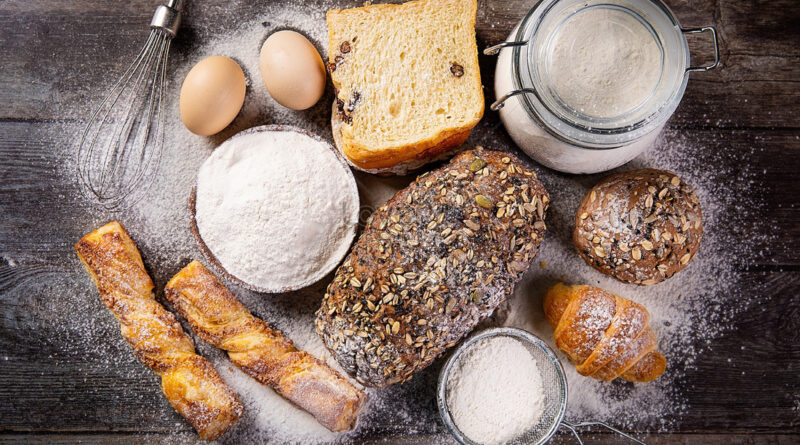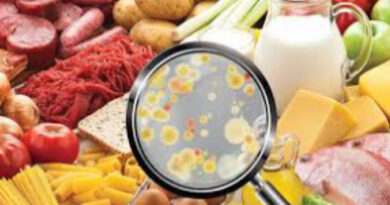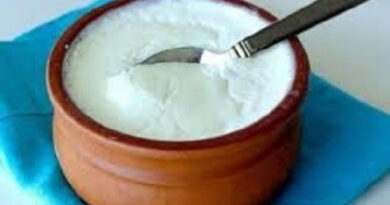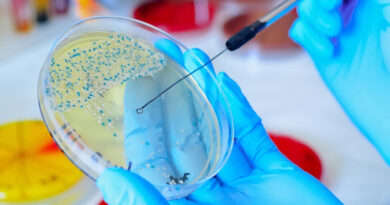The Microbiological Magic of Bread Making: An In-Depth Exploration
Bread, a staple food across the globe, owes its fluffy texture and rich flavors to the fascinating world of microbiology. The process of transforming simple ingredients like flour, water, yeast, and salt into a delicious loaf involves a complex interplay of microorganisms, primarily yeast and bacteria, that drive the fermentation process. This article delves into the science behind bread making, exploring how these tiny life forms create one of humanity’s most beloved foods.
The Role of Yeast in Bread Making
At the heart of bread making is yeast, a single-celled fungus that plays a crucial role in fermentation. The most commonly used yeast in baking is Saccharomyces cerevisiae. This microorganism is responsible for converting fermentable sugars present in the dough into carbon dioxide (CO₂) and ethanol through the process of anaerobic respiration.
Fermentation Process
1. Mixing and Hydration:
– When flour and water are mixed, the yeast cells become active. Enzymes in the flour, such as amylase, break down starches into simpler sugars like maltose and glucose.
2. Fermentation:
– Yeast consumes these sugars and produces CO₂ and ethanol. The CO₂ gas gets trapped in the gluten network (formed by the proteins in flour), causing the dough to rise and expand. This creates the characteristic airy structure of bread.
– The ethanol mostly evaporates during baking, contributing to the bread’s flavor.
3. Proofing:
– This is a crucial stage where the dough is allowed to rest and rise. The yeast continues to ferment the sugars, increasing the dough’s volume and developing flavor.
The Role of Bacteria in Bread Making
While yeast is the primary leavening agent, certain types of bread, especially sourdough, rely heavily on the action of bacteria. Lactic acid bacteria (LAB), such as Lactobacillus and Leuconostoc, play a pivotal role in sourdough fermentation.
Sourdough Fermentation
1. Starter Culture:
– A sourdough starter is a symbiotic culture of yeast and LAB. It is created by mixing flour and water and allowing it to ferment over several days. This culture is then used to leaven the dough.
2. Lactic Acid Fermentation:
– LAB consume sugars in the dough and produce lactic acid and acetic acid. These acids contribute to the tangy flavor of sourdough and also help preserve the bread by lowering its pH, making it less prone to spoilage.
3. Complex Interactions:
– The yeast and bacteria work together in a complex symbiosis. Yeast produce CO₂ for leavening, while LAB contribute to flavor and texture. The acids produced by LAB can also strengthen the gluten network, improving the bread’s structure.
The Science of Dough Development
The development of dough is a critical phase in bread making, influenced by the activity of both yeast and bacteria, as well as physical factors like kneading.
1. Gluten Formation:
– Gluten, a protein network, is essential for trapping CO₂ gas. Kneading the dough aligns the gluten proteins, creating an elastic structure that can stretch and hold the gas bubbles produced during fermentation.
2. Enzyme Activity:
– Enzymes like proteases and amylases break down proteins and starches, respectively. This not only makes the dough easier to work with but also provides more sugars for yeast fermentation, enhancing the rise and flavor of the bread.
Baking: The Final Transformation
Baking is the final step where the dough undergoes dramatic changes. The heat of the oven causes several key reactions:
1. Oven Spring:
– The initial burst of heat causes rapid CO₂ expansion, resulting in a final rise known as oven spring. The yeast activity also peaks briefly before the cells die from the heat.
2. Maillard Reaction and Caramelization:
– These chemical reactions occur at high temperatures, creating the brown crust and complex flavors of baked bread. The Maillard reaction involves amino acids and reducing sugars, producing a rich array of flavors and aromas.
3. Starch Gelatinization and Protein Denaturation:
– Starch granules absorb water and swell, gelatinizing to form the crumb structure. Meanwhile, gluten proteins coagulate, setting the bread’s structure permanently.
Conclusion
The art of bread making is a testament to the power of microbiology. Through the orchestrated activities of yeast and bacteria, simple ingredients are transformed into a nourishing and flavorful food. Understanding the microbial processes at play not only deepens our appreciation for bread but also opens up endless possibilities for innovation in baking. Whether it’s a rustic sourdough or a fluffy white loaf, the microbial magic behind bread making continues to be a cornerstone of culinary science.



